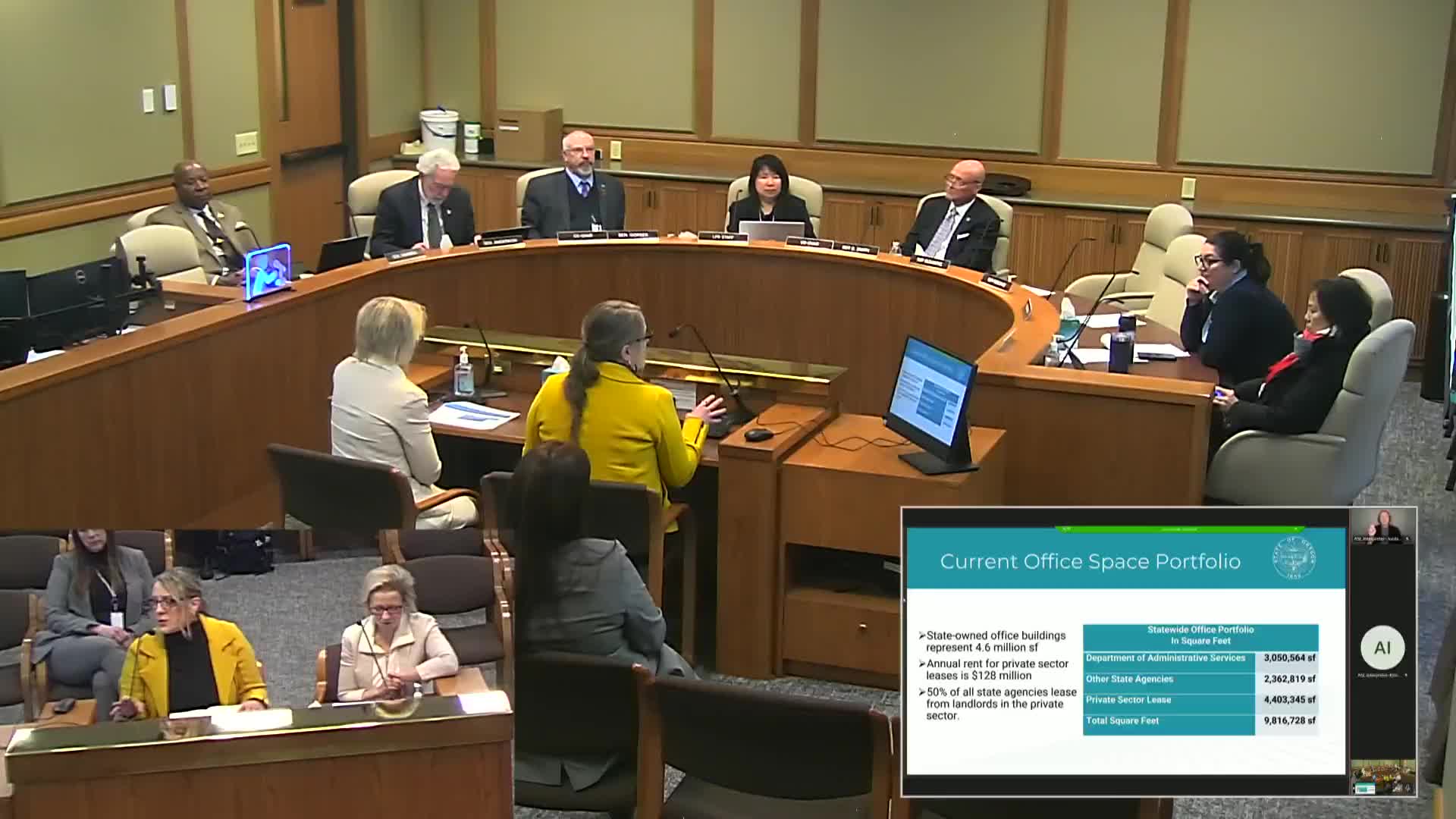Oregon agencies plan 30% reduction in office space to optimize hybrid work model
February 26, 2025 | General Government, Ways and Means, Joint, Committees, Legislative, Oregon
This article was created by AI summarizing key points discussed. AI makes mistakes, so for full details and context, please refer to the video of the full meeting. Please report any errors so we can fix them. Report an error »

Oregon's government is gearing up for a significant transformation in its office space utilization, aiming for a 30% reduction in its overall footprint by 2027. This ambitious initiative, supported by the governor, comes in response to a survey revealing that nearly one-third of state agencies are using only 25% or less of their office space. With a budget of approximately $128 million spent annually on private sector leases and $39 million on state-owned facilities, the state sees a prime opportunity to save money while adapting to a hybrid workforce model.
The project, which kicked off earlier this year, includes the rollout of a new statewide space utilization policy designed to redefine how agencies think about their office needs. This policy encourages agencies to co-locate similar functions to enhance efficiency and service delivery. As part of this effort, the state is exploring options to liquidate or repurpose underutilized properties, including potential partnerships with private entities or community organizations.
Co-chair Smith emphasized the importance of this initiative, stating that it is not just about cutting costs but also about optimizing the use of state resources. The project aims to create spaces that better support the evolving needs of employees who may work both remotely and in-office.
While the transition may take time due to existing lease commitments, early adopters are already beginning to move into state-owned facilities. The Oregon Youth Authority is one such agency looking to relocate, showcasing the initiative's momentum.
In addition to office spaces, the state is also considering other properties it owns, such as those managed by the forestry and parks departments, to maximize resource utilization. This comprehensive approach aims to ensure that all state-owned properties are effectively leveraged for the benefit of Oregonians.
As the state navigates this complex process, officials remain committed to learning and adapting their strategies to meet the needs of a changing workforce and community. The anticipated outcomes of this project could reshape how state services are delivered and how public spaces are utilized in the years to come.
The project, which kicked off earlier this year, includes the rollout of a new statewide space utilization policy designed to redefine how agencies think about their office needs. This policy encourages agencies to co-locate similar functions to enhance efficiency and service delivery. As part of this effort, the state is exploring options to liquidate or repurpose underutilized properties, including potential partnerships with private entities or community organizations.
Co-chair Smith emphasized the importance of this initiative, stating that it is not just about cutting costs but also about optimizing the use of state resources. The project aims to create spaces that better support the evolving needs of employees who may work both remotely and in-office.
While the transition may take time due to existing lease commitments, early adopters are already beginning to move into state-owned facilities. The Oregon Youth Authority is one such agency looking to relocate, showcasing the initiative's momentum.
In addition to office spaces, the state is also considering other properties it owns, such as those managed by the forestry and parks departments, to maximize resource utilization. This comprehensive approach aims to ensure that all state-owned properties are effectively leveraged for the benefit of Oregonians.
As the state navigates this complex process, officials remain committed to learning and adapting their strategies to meet the needs of a changing workforce and community. The anticipated outcomes of this project could reshape how state services are delivered and how public spaces are utilized in the years to come.
View full meeting
This article is based on a recent meeting—watch the full video and explore the complete transcript for deeper insights into the discussion.
View full meeting
